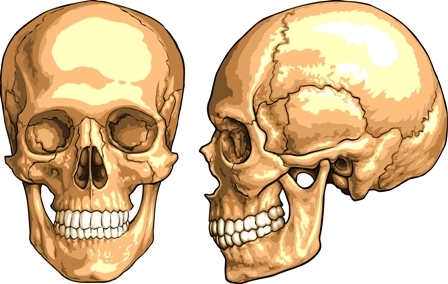Mark These Mandates For Arthrocentesis and Pin/ Wire Insertion Reporting

Several bundles in the latest coding edits for 2015 focuses on arthrocentesis and skeletal traction procedures that your oral surgeon might perform. Here’s what you need to know about the latest version 21.2 of the Correct Coding Initiative (CCI) edits, which became effective on July 1, 2015 and how it will affect your coding.
Watch For Edits When Reporting Arthrocentesis With Other TMJ Codes
CPT® 2015 saw some modifications to TMJ arthrocentesis codes, including changes to the descriptor of the previously existing code, 20605 (Arthrocentesis, aspiration and/or injection, intermediate joint or bursa [e.g., temporomandibular, acromioclavicular, wrist, elbow or ankle, olecranon bursa]; without ultrasound guidance) and the introduction of a new code, 20606 (…with ultrasound guidance, with permanent recording and reporting) when your surgeon uses ultrasound guidance for the placement of the needle into the joint.
CPT® coding guidelines already instruct you not to report these codes with 76942 (Ultrasonic guidance for needle placement [e.g., biopsy, aspiration, injection, localization device], imaging supervision and interpretation). You can, however, submit an additional code for fluoroscopic, CT, or MRI guidance when applicable.
New edits: According to CCI 21.2, you cannot report 20605 or 20606 with the CPT® code for TMJ therapeutic manipulation. So, you will face bundling if you are trying to report the joint injection codes with 21073 (Manipulation of temporomandibular joint[s] [TMJ], therapeutic, requiring an anesthesia service [i.e., general or monitored anesthesia care]). The injection codes are the column 2 codes in the CCI edit which means you can only report the manipulation code and the injection service is included in the work associated with 21073.
The old arthrocentesis code, 20605, already had bundling edits with 76970 (Ultrasound study follow-up [specify]). Now, under CCI 21.2, the bundling with 76970 has been extended to include the new arthrocentesis code, 20606. The injection procedures are listed as the Column 1 codes, which mean they include the work associated with 76970. As such, you only include the injection code on your claim.
Modifier indicator: All these above mentioned edits concerning arthrocentesis codes, 20605 and 20606, carry the modifier indicator ‘1,’ which means you can overcome the edit bundle using a suitable modifier. Verify the circumstances and ensure that you have full documentation supporting both codes before submitting a claim this way.
“In order to use a modifier to bypass the CCI edit, the provider would need to complete the procedure during a different session or at a different anatomic area from the joint injection site,” says Marvel J. Hammer, RN, CPC, CCS-P, PCS, ACS-PM, CHCO, of MJH Consulting in Denver, Co.
Coding tip: Many payers consider manipulation of the TMJ under anesthesia for treatment of chronic pain as investigational. In such a case, you may not receive any reimbursement for your claim for 21073. If your surgeon is performing TMJ therapeutic manipulation under anesthesia, it is best to check if the procedure is covered and if so, check if any prior authorization is required before performing the procedure.
Exercise Caution When Reporting 20650 With Other Fracture Codes
You report 20650 (Insertion of wire or pin with application of skeletal traction, including removal [separate procedure]) when your surgeon places a pin or a wire for the application of traction to the bone. Since the descriptor contains the phrase “separate procedure,” you should reserve the use of this code when your surgeon performs this as a separate and standalone procedure.
CCI 21.2 has now brought in edits that bundle 20650 into many fracture-related and fixation codes that you would probably use frequently in your oral surgery practice. So, if you are looking at reporting 20650 with any fracture related codes, you should look into CCI to see if any code bundling does exist.
Some of the CPT® codes that are commonly used in oral surgery practices that are now included in the edit bundle with 20650 are:
Apart from these above mentioned edits, you will also face edits if you are trying to report 20650 with treatment of LeFort III type fractures (21435-21445) or zygomatic arch fractures (21360-21366).
Modifier indicator: All the above CCI edits carry the modifier indicator ‘1,’ which means you can unbundle the two codes and report them separately by using a suitable modifier. Since 20650 is the column 2 code in each of these edits, you will have to append the modifier to this code. But, do not always append the modifier and report both the codes. See if the situation warrants you to report both the codes and report 20650 if and only if the procedure is separate from the other procedural code and not if it is part of the same procedure.




